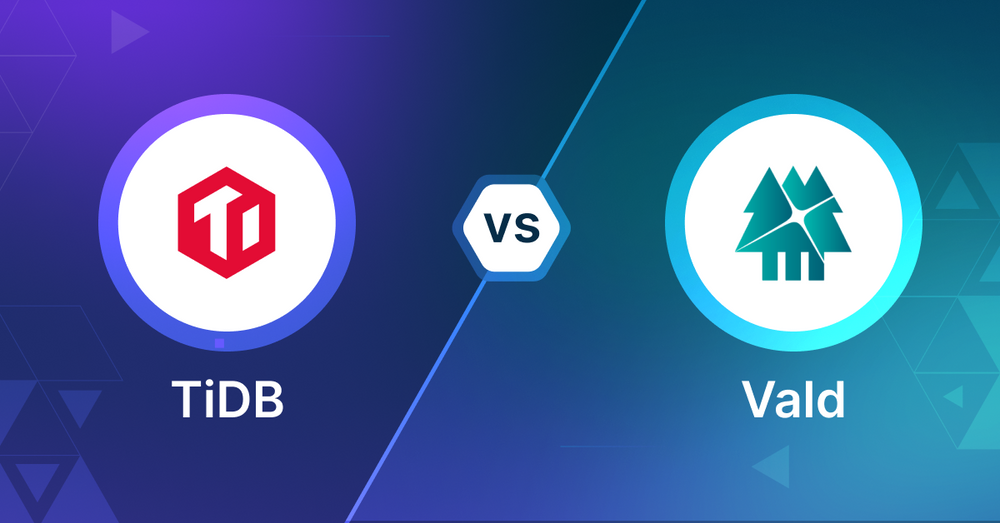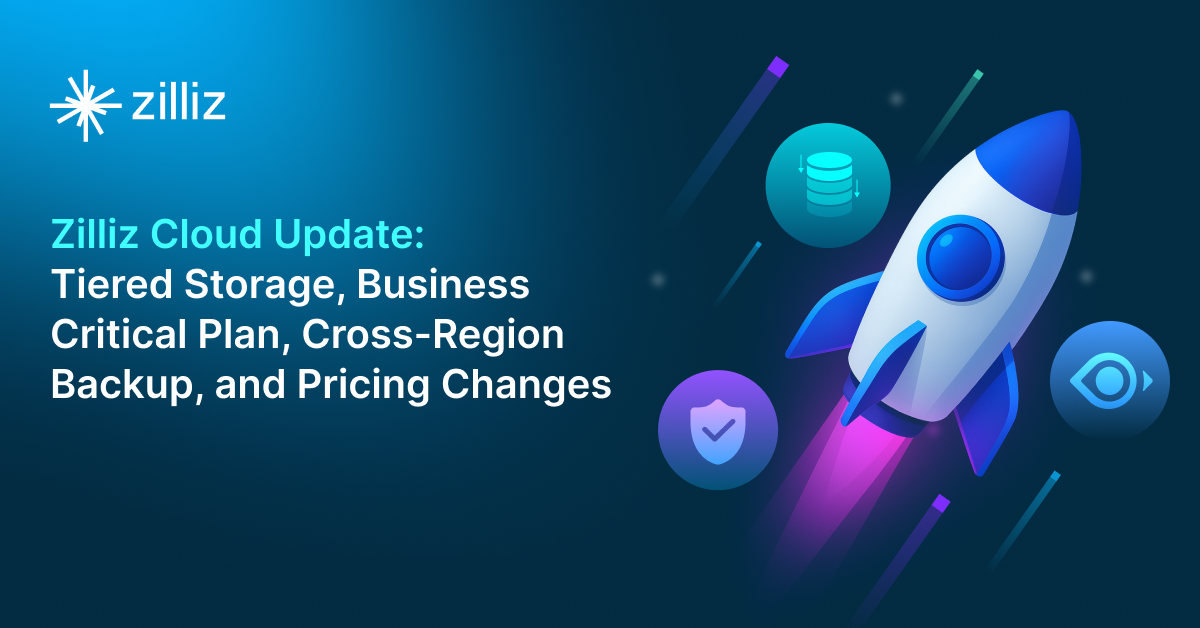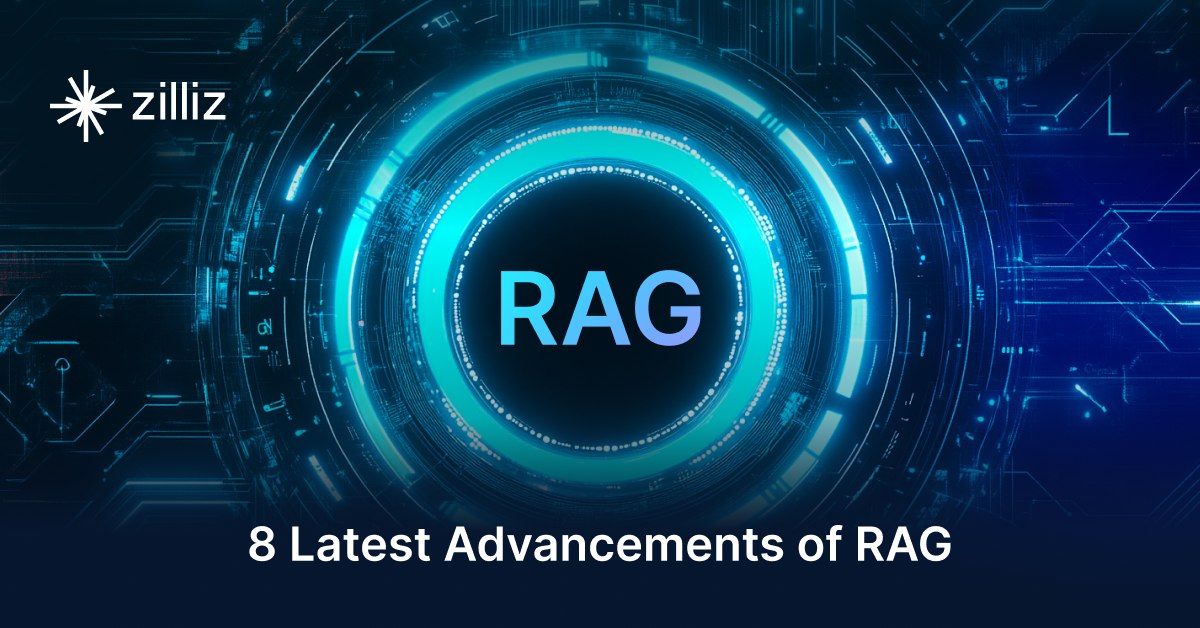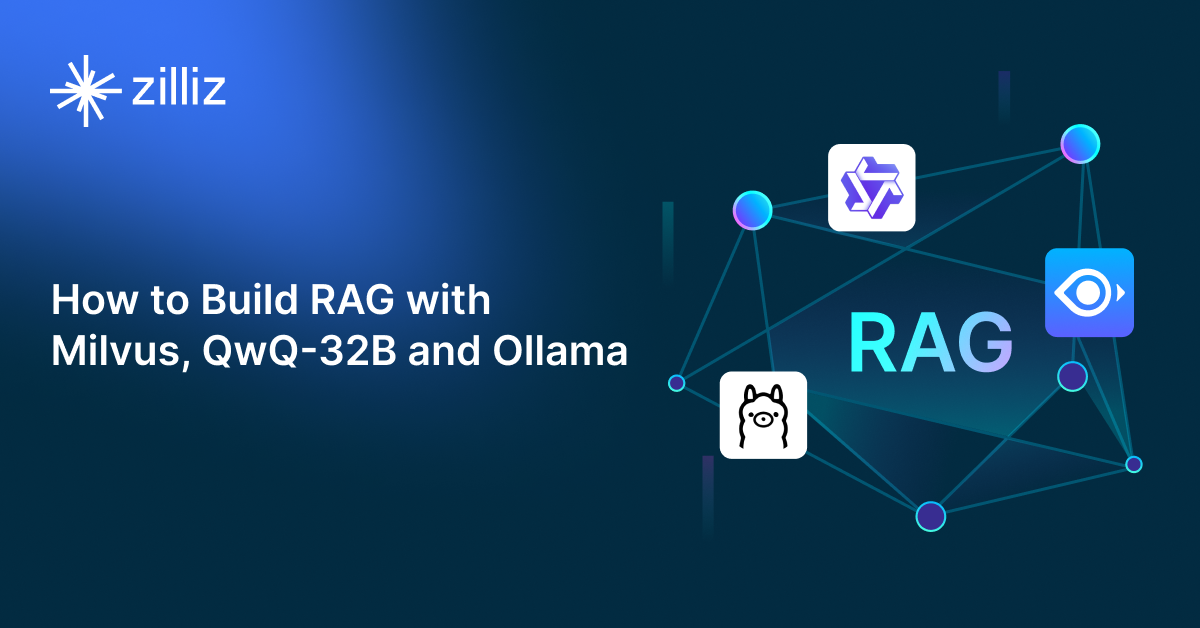TiDB vs Vald Choosing the Right Vector Database for Your AI Apps

What is a Vector Database?
Before we compare TiDB and Vald, let's first explore the concept of vector databases.
A vector database is specifically designed to store and query high-dimensional vectors, which are numerical representations of unstructured data. These vectors encode complex information, such as the semantic meaning of text, the visual features of images, or product attributes. By enabling efficient similarity searches, vector databases play a pivotal role in AI applications, allowing for more advanced data analysis and retrieval.
Common use cases for vector databases include e-commerce product recommendations, content discovery platforms, anomaly detection in cybersecurity, medical image analysis, and natural language processing (NLP) tasks. They also play a crucial role in Retrieval Augmented Generation (RAG), a technique that enhances the performance of large language models (LLMs) by providing external knowledge to reduce issues like AI hallucinations.
There are many types of vector databases available in the market, including:
- Purpose-built vector databases such as Milvus, Zilliz Cloud (fully managed Milvus)
- Vector search libraries such as Faiss and Annoy.
- Lightweight vector databases such as Chroma and Milvus Lite.
- Traditional databases with vector search add-ons capable of performing small-scale vector searches.
TiDB is a traditional database with vector search as an add-on and Vald is a vector database. This post compares their vector search capabilities.
TiDB: Overview and Core Technology
TiDB, developed by PingCAP, is an open-source, distributed SQL database that offers hybrid transactional and analytical processing (HTAP) capabilities. It is MySQL-compatible, making it easy to adopt for teams already familiar with the MySQL ecosystem. TiDB's distributed SQL architecture provides horizontal scalability like NoSQL databases while retaining the relational model of SQL databases, making it highly flexible for handling both transactional and analytical workloads.
One of TiDB's core strengths is its HTAP architecture, which allows it to process transactional (OLTP) and analytical (OLAP) workloads in a single database, reducing the need for separate systems. Additionally, TiDB's MySQL compatibility makes it easy to integrate into existing environments that rely on MySQL without significant changes to the application code. The database also features auto-sharding, automatically distributing data across nodes to improve read and write performance while maintaining strong consistency.
TiDB supports vector search through integration with external libraries and plugins, enabling efficient management and querying of vectorized data. This feature, combined with TiDB's HTAP architecture, makes it a versatile option for businesses needing vector search capabilities alongside transactional and analytical workloads. The distributed architecture of TiDB allows it to handle large-scale vector queries once the necessary configurations are in place.
While including vector search functionalities in TiDB requires additional configuration, the system's SQL compatibility allows developers to combine vector search with traditional relational queries. This flexibility makes TiDB suitable for complex applications that require both vector search and relational database capabilities, offering a comprehensive solution for diverse data management needs.
Vald: Overview and Core Technology
Vald is a powerful tool for searching through huge amounts of vector data really fast. It's built to handle billions of vectors and can easily grow as your needs get bigger. The cool thing about Vald is that it uses a super quick algorithm called NGT to find similar vectors.
One of Vald's best features is how it handles indexing. Usually, when you're building an index, everything has to stop. But Vald is smart - it spreads the index across different machines, so searches can keep happening even while the index is being updated. Plus, Vald automatically backs up your index data, so you don't have to worry about losing everything if something goes wrong.
Vald is great at fitting into different setups. You can customize how data goes in and out, making it work well with gRPC. It's also built to run smoothly in the cloud, so you can easily add more computing power or memory when you need it. Vald spreads your data across multiple machines, which helps it handle huge amounts of information.
Another neat trick Vald has is index replication. It stores copies of each index on different machines. This means if one machine has a problem, your searches can still work fine. Vald automatically balances these copies, so you don't have to worry about it. All of this makes Vald a solid choice for developers who need to search through tons of vector data quickly and reliably.
Key Differences
Search Methodology
TiDB integrates vector search through external libraries and plugins. These integrations allow vectorized data processing in a hybrid transactional and analytical (HTAP) mode. While TiDB’s main focus is on SQL, vector search relies on external configuration. The ability to combine vector search with relational queries makes it suitable for applications that need both vector similarity and SQL driven analytics.
Vald on the other hand is built for vector search. It uses the NGT (Neighborhood Graph and Tree) algorithm which is optimized for high speed similarity search. This core algorithm is designed to handle massive vector datasets, making Vald a dedicated solution for vector heavy applications. It can search during indexing, which gives it an edge in real-time applications.
Data
TiDB’s distributed SQL architecture can handle structured, semi-structured and unstructured data. Its SQL compatibility ensures strong consistency and supports advanced transactional workflows. For vector data, TiDB’s handling depends on external plugins which adds flexibility but can be complex for some use cases.
Vald is designed for unstructured vector data. It supports dynamic indexing and distributed storage so it’s scalable and redundant. Vald is more focused than TiDB as it’s not designed for structured or transactional data.
Scalability and Performance
TiDB is good at horizontal scalability. Its auto-sharding feature can distribute data across nodes and can handle high read and write throughput for both OLTP and OLAP workloads. But when it comes to large scale vector data, its performance depends on the capabilities of the integrated vector search tools.
Vald is scalable for vector data. It distributes vectors across multiple nodes and uses replication and dynamic load balancing to handle billions of vectors. Vald’s indexing and search remains performant as data grows, so it’s a good choice for high scale vector search.
Flexibility and Customization
TiDB has a lot of flexibility in data modeling, query execution and MySQL compatible ecosystem. The ability to combine vector search with SQL queries is a powerful feature for applications that need complex data interactions. But the need for external libraries to enable vector search limits out-of-the-box customization.
Vald is highly customizable for vector specific operations. Its gRPC integration and support for multiple input/output pipelines allows developers to tailor its functionality to specific workflows. It’s not designed for relational data but its vector focused architecture gives it unmatched flexibility in that domain.
Integration and Ecosystem
TiDB integrates well with MySQL based tools and frameworks so it’s suitable for teams already invested in the MySQL ecosystem. Its hybrid capabilities allow integration across transactional and analytical workloads.
Vald is designed to integrate well with cloud native environments. Its Kubernetes native architecture makes it easy to deploy and scale in containerized setups. Vald’s cloud provider compatibility adds to its ecosystem integration for AI and ML workflows.
Ease of Use
TiDB’s MySQL compatibility makes it easy to learn for teams familiar with SQL databases. Its extensive documentation and community support helps with adoption. But setting up vector search functionality requires extra effort.
Vald’s vector search design makes it easy to learn for developers focused on similarity search. Its cloud native architecture and robust backup and replication makes maintenance and scaling easy.
Cost
TiDB’s cost depends on its complexity. While its SQL based operations are efficient, vector search integration adds to resource and management cost. Managed service options can help to reduce operational overhead.
Vald’s cost efficiency comes from its specialization. It’s optimized for vector search so resources are directed towards high speed indexing and querying. Cloud native deployment also allows cost effective scaling on demand.
Security
TiDB has enterprise grade security features including encryption, authentication and access control. These are important for applications that require high data security.
Vald has authentication and data replication for fault tolerance. But its security is focused on vector search applications not general purpose database operations.
When to Use Each
TiDB
TiDB is the best choice for hybrid data management. If you have a use case that involves large scale structured or semi-structured data and need to include vector search, TiDB’s HTAP architecture and SQL support is a complete solution. It’s especially good for environments where transactional and analytical workloads need to coexist.
Vald
Vald is best for scenarios where high performance vector search is the main requirement. If your application is around similarity search across big datasets—such as recommendation systems, image retrieval or AI/ML workflows—Vald’s specialized architecture and dynamic scaling makes it the better choice. Plus, its cloud-native deployment makes it even more suitable for vector heavy workloads.
Summary
TiDB is good at being general purpose, hybrid transactional and analytical processing and vector search integrations. Vald is good at being specialized, fast and reliable vector search for unstructured data at scale. Your choice depends on your use case—do you need a general database with vector search or a vector search engine optimized for speed and scalability?
Read this to get an overview of TiDB and Vald but to evaluate these you need to evaluate based on your use case. One tool that can help with that is VectorDBBench, an open-source benchmarking tool for vector database comparison. In the end, thorough benchmarking with your own datasets and query patterns will be key to making a decision between these two powerful but different approaches to vector search in distributed database systems.
Using Open-source VectorDBBench to Evaluate and Compare Vector Databases on Your Own
VectorDBBench is an open-source benchmarking tool for users who need high-performance data storage and retrieval systems, especially vector databases. This tool allows users to test and compare different vector database systems like Milvus and Zilliz Cloud (the managed Milvus) using their own datasets and find the one that fits their use cases. With VectorDBBench, users can make decisions based on actual vector database performance rather than marketing claims or hearsay.
VectorDBBench is written in Python and licensed under the MIT open-source license, meaning anyone can freely use, modify, and distribute it. The tool is actively maintained by a community of developers committed to improving its features and performance.
Download VectorDBBench from its GitHub repository to reproduce our benchmark results or obtain performance results on your own datasets.
Take a quick look at the performance of mainstream vector databases on the VectorDBBench Leaderboard.
Read the following blogs to learn more about vector database evaluation.
Further Resources about VectorDB, GenAI, and ML
- What is a Vector Database?
- TiDB: Overview and Core Technology
- Vald: Overview and Core Technology
- Key Differences
- When to Use Each
- Summary
- Using Open-source VectorDBBench to Evaluate and Compare Vector Databases on Your Own
- Further Resources about VectorDB, GenAI, and ML
Content
Start Free, Scale Easily
Try the fully-managed vector database built for your GenAI applications.
Try Zilliz Cloud for FreeKeep Reading

Zilliz Cloud Update: Tiered Storage, Business Critical Plan, Cross-Region Backup, and Pricing Changes
This release offers a rebuilt tiered storage with lower costs, a new Business Critical plan for enhanced security, and pricing updates, among other features.

8 Latest RAG Advancements Every Developer Should Know
Explore eight advanced RAG variants that can solve real problems you might be facing: slow retrieval, poor context understanding, multimodal data handling, and resource optimization.

How to Build RAG with Milvus, QwQ-32B and Ollama
Hands-on tutorial on how to create a streamlined, powerful RAG pipeline that balances efficiency, accuracy, and scalability using the QwQ-32B model and Milvus.
The Definitive Guide to Choosing a Vector Database
Overwhelmed by all the options? Learn key features to look for & how to evaluate with your own data. Choose with confidence.